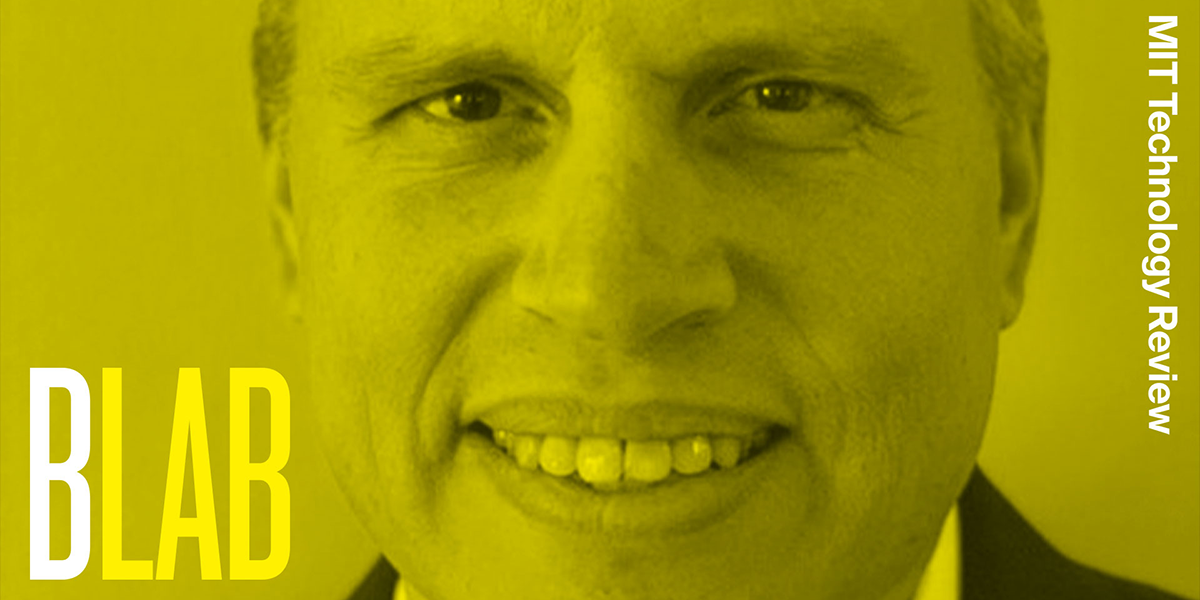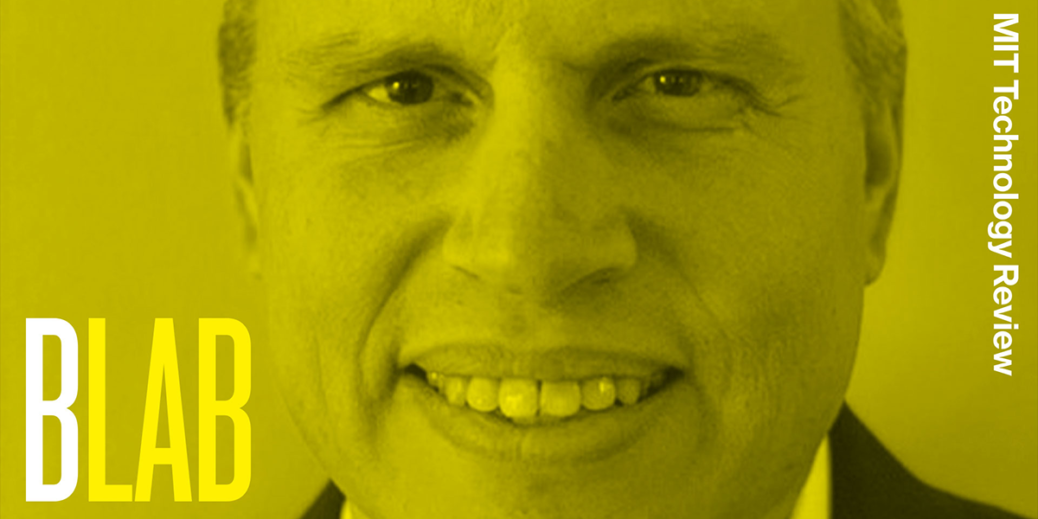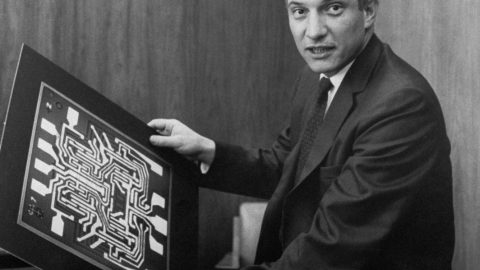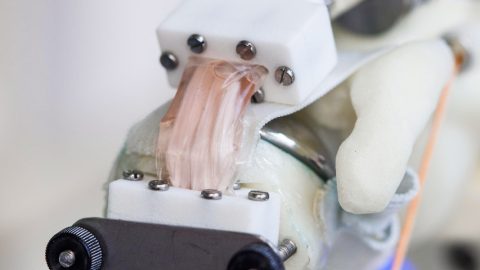
The next wave of aerospace is just around the corner, and a lot of that innovation is happening thanks to new, faster methods of development.
“What’s happening now is that companies are trying to understand how they take the lessons from Agile software development and apply those to Agile product development,” explains Dale Tutt, vice president of Aerospace and Defense Industry for Siemens. With Agile software development, you can build software and test it relatively quickly.
“When you start talking about an airplane or an air taxi,” Tutt says, “it’s expensive to build a prototype and test them, so you have to think about it in a different way and take a different approach. It really takes good program planning.”
This new type of product development, where planes and other kinds of air transport are developed faster than ever, still needs to incorporate safety as a top priority, which creates new kinds of challenges. These kinds of products are different than smartphones or other consumer electronics, Tutt explains.
“Part of it is driven by the safety and reliability you want to have—so that when you’re flying around, you can safely operate the vehicle. There’s a certain amount of durability and reliability that’s built into the design of the product. The amount of investment that these companies or that an individual would make in buying one of these aircraft means there’s an expectation that it’s going to last a while, and that you’re going to have value in that asset. It’s a little bit different than some of the consumer goods that we buy, and it’s more expensive to repair them than it is to replace them.”
Balancing speed and efficiency of development is no easy feat when it comes to flying through the air. But Tutt believes we’re living through incredible times where things we can’t imagine now will soon become part of our daily lives.
“Whether it’s high-speed aircraft and companies working on the next presidential hypersonic aircraft, or space exploration companies, or urban air mobility and air taxis—there are hundreds of startup companies that are going to transform how we move around large urban areas. And we’ll be moving around in a more sustainable manner because it will be electrically powered. Pretty cool stuff. It’s been a long time since we’ve seen this much innovation going on in aerospace.”
Full transcript
Laurel Ruma: From MIT technology review, I’m Laurel, and this is Business Lab, the show that helps business leaders make sense of new technologies coming out of the lab and into the marketplace. Our topic today is the future of aerospace and urban air mobility. More than delivery drones and rockets to the moon, think about how an extensive air transportation network could be built for people and cargo. Now think about autonomous vehicles in the air and in space. How is digital transformation compelling even the most innovative industries like aerospace to work differently to build the future?
Two words for you: Agile innovation.
My guest is Dale Tutt, vice-president of Aerospace and Defense Industry for Siemens. Prior to this role, Dale worked at the Spaceship Company, and in December, 2018, led the team on a successful flight into space. This episode of Business Lab is produced in association with Siemens. Welcome Dale.
Dale Tutt: Thank you, Laurel. I’m very happy to be here today.
Laurel: Let’s start off with a context question. What is the current state of aerospace and urban air mobility? And how do you define “urban air mobility”?
Dale: We are in such an amazing period of innovation with the new entrants that we see in all kinds of aerospace ventures, whether it’s high-speed aircraft and companies working on the next presidential hypersonic aircraft or a little company like Hermeus and other space exploration companies. It’s not only what SpaceX is doing, but also rocket labs, and there are hundreds of startups working on this, like Virgin galactic where I used to work.
And then, of course, urban air mobility—or air taxis. Most people who refer to urban air mobility are talking about the electric vertical takeoff and landing aircraft that are being envisioned to fly above the gridlock in large urban areas, as an Uber-like service.
Uber Elevate was working on this. With air taxis, there are hundreds of startup companies that are going to transform how we move about these large urban areas, and they’re doing it in a sustainable manner because it will be electrically powered. Pretty cool stuff. A lot of excitement. It’s been a long time since we’ve seen this much innovation going on in aerospace.
Laurel: Very exciting to think of an urban air taxi. You would just hail it like a Jetsons moment, where a vehicle would come down and pick you up and whisk you away.
Dale: Yes, absolutely.
Laurel: So how does this translate to enterprises and the defense industry?
Dale: With a lot of enterprises, the incumbents in these industries are under a lot of pressure to reduce their own costs and schedule, and to become much more innovative themselves in how they’re bringing new products to market faster. There’s just more pressure on them.
A lot of these startups are being funded by visionary people who are looking to transform the aerospace and defense industry in general. A lot of these companies are looking at how to restructure their business so they can become much more agile, so they can move faster. Some of these large companies want to become like startups, as they see the success that startups are having.
In the defense industry, we’re seeing many of the same trends. The defense industry itself needs to reach a much higher level of collaboration between their defense agencies and the OEMs, with the purpose to accelerate the development of these new capabilities they need to deliver to their customers—in this case, the men and women in the services. They need to accelerate the acquisition progress. When you think about what these companies are trying to achieve and what these defense agencies are trying to achieve, they have lofty goals. Some of these new aircraft programs want sixth-generation capability at half the cost and schedule of a fifth-generation capability. If you look at the history, it’s always been an ever-increasing cost and schedule to develop these new programs. To come in and say, “You know what, I want more, but I want it for much less than before,” to achieve those goals, is going to require a change in the way you do business, and adoption of digital technologies, and agile innovation.
Laurel: So, and example of an OEM—original equipment manufacturer—would be something like Lockheed Martin?
Dale: Yes. So are Northrop Grumman, or Bombardier, Boeing, the companies that are primarily responsible for delivering the finished aircraft are usually referred to as the OEMs, and then they have their tier one and tier two suppliers that provide parts and components to them.
Laurel: Much like other industries, the aerospace industry is now seeing its own pressure from startups entering into this space, and this is now requiring everyone to work in a very different way?
Dale: Absolutely. These small startup companies oftentimes don’t have legacy processes, so they’re able to take advantage of the latest technology and the latest processes. They’re moving very fast with small teams, and as a result, the incumbent companies are trying to respond to that and go just as fast.
Laurel: For something like an air taxi or an electric vertical takeoff and landing aircraft, what is the product development life cycle like now?
Dale: It starts with a concept. A lot of times, they’re trying to optimize their product architecture, and oftentimes you’ll see these companies, especially the startup companies, as they’re going through their development cycles, they’ll build a prototype and they’ll start flying it because they’re trying to learn about it. They’re trying to learn about the flight characteristics of their product, and they’re also using that to help support some of their funding rounds. Then, as they move from that concept, they’ll move into a preliminary design where they start optimizing the subsystems on the aircraft, because you’re trying to take out weight. Especially, with the electric vertical takeoff and landing aircraft, you have to be very weight conscious because you need to be able to provide cabin comfort, but you also need to be able to provide performance.
Then they move into a more detailed design phase and start building prototypes and going through a certification process. Eventually, once they start building aircraft and delivering them, they’ll have to start supporting these over, who knows, 30 or 40 years in some cases. When you look at aircraft today, they fly for 50 or 60 years with no problem. So, the companies have to support them for a long time. There’s a bit of a standard cycle that’s involved, but they still have to move through a bit of a traditional design process. They’re just doing it a lot faster.
Laurel: That’s a very good point. We expect aircraft to have a very long shelf life, and that’s not necessarily how products are built these days, where you have constant new versions being released, new phones every year. That’s quite a challenge for something like the aerospace industry.
Dale: Absolutely. Part of it is driven by safety, and you need the reliability that when you’re flying around, you can safely operate the vehicle. There’s a certain amount of durability and reliability that’s built into the design of the product.
And then, that starts to drive towards the fact then it lasts for a long time. So, the amount of investment that these companies or that an individual would make in buying one of these aircraft, they have an expectation that they’re not going to spend half a million dollars on something or a million dollars—or if you’re buying a business jet or an airliner, maybe $50, $60, $100 million, depending on what you’re buying—there’s an expectation that it’s going to last a while, and that you’re going to have value in that asset. So, it’s a little bit different than some of the consumer goods that we buy, and it’s more expensive to repair them than it is replace them.
Laurel: How does Agile product development and Agile engineering factor into innovations for aerospace?
Dale: It can be a bit of a game changer, when you think about how programs have been traditionally run in what is called a waterfall approach, or the very serial process where you go through each design phase and evaluate everything and then move on to the next phase and maybe start building it and then testing it. What’s happening now is that companies are trying to understand how they take the lessons from Agile software development and apply those to Agile product development. Agile software development is easy—I shouldn’t say it’s easy, but you can do regular software builds and testing. The whole premise around Agile is that you develop a little bit of software with a small, focused team, and then you can do a software build and test it, and you can go through iteration cycles really fast. So, the cycles of learning occur very quickly.
But when you start talking about an airplane or an air taxi, it’s pretty expensive to build a prototype and test them. So, you have to think about it in a different way and take a different approach. It takes good program planning. Sometimes people say, “Well, Agile products, Agile development is chaotic.” Actually, it’s not. It’s pretty advanced in how you structure your program so that you can plan in different sprints. When we used to do Agile product development for some of the programs, one week was wing chunk, the next week was fuselage chunk and cockpit chunk. We would move through the different sections of the airplane design, but we’d all be focused on the same area so that we could advance the maturity of the product very quickly.
What’s also changing is not only are you able to structure your program a little differently to support different sets of milestones, but you’re enabled by the comprehensive digital twin. Instead of using an actual physical prototype that you build and test, more and more companies are now starting to utilize virtual verification to analyze the performance of their product as they continue to design and build it, as well as virtual manufacturing to know that they can actually build it. When they get done with their development processes, they know that they have a product that will move into the test program and certification program very easily, but also that they have a good path to being able to build it before they start making a lot of investments in their manufacturing facilities.
In a sense, it’s kind of like Agile software development, where you’re utilizing the virtual world, the digital world to test your product before you actually have it available to fly.
Laurel: Which certainly makes sense, especially with such a massive investment into some of these products.
Dale: Yes. Time is money, and the capital investment is huge. Some of these products, like air taxis, I’ve seen quoted that it might take up to a billion dollars to certify these products. That’s a sizable chunk of change when you think about the amount of investment it takes to get there, and then how to recoup that over time. Anything you can do to make sure you go through that process with as few changes as possible and removing risk can have a significant cost savings on the program—or maybe a better way of saying it is, by eliminating the risk, you eliminate some of the opportunities for big cost overruns and schedule delays.
Laurel: So what other benefits can companies expect by adopting Agile practices? Saving time and saving money are two of the most important things, but it sounds like risk is also something to consider?
Dale: We always say that time is money, and if you can go faster with a smaller team and you can avoid cost overruns, then you can reduce your cost and your schedule overall. So, cost and schedule tend to go hand in hand. And sometimes the risk influences the scope of the programs if you have to add big efforts to redesign your product or to make changes to your manufacturing process. That’s one of the obvious benefits of this.
There are also a couple of benefits that are a little bit more intangible. One of them is being able to be much more responsive to your customer needs. By bringing these products to market faster, you reduce the amount of time between the customer expressing what they would like to have and you delivering it. Being able to deliver faster, this is going to sound funny, but the customer has less time to change their mind or to have interest in new products and new options. Being able to bring these products to market faster, you’re being much more responsive to what your customer’s asking for. You’re not saying, “Okay, well, that’s a great idea. We’re going to go build it, and 15 years from now we’ll deliver it to you.” That’s not what customers are looking for.
One internal benefit a lot of companies have is they’re finding implementation much more positive for their teams. Their teams are feeling much more empowered in how they’re working together. They’re working in smaller teams, very collaborative teams, that are helping to break down silos, so you eliminate some of those internal frustrations.
It transforms your program management because you’re moving from focusing on meeting arbitrary milestones during product development to what are you doing to help mature the product baseline and ensure you’re delivering the product the customer’s looking for. It also transforms some of your processes you have with suppliers. Because to be agile, you have to ramp up the collaboration with your suppliers as well. Agile practices have a lot of internal benefits to support much more collaborative and effective teams.
Laurel: I like that emphasis on collaborating with your ecosystem and your suppliers. So, it actually helps with down-the-chain effects, where if you’re building products in this agile way, then your ecosystem will have to start doing that as well, and it helps everybody actually speed time to market.
Dale: Absolutely. When you think about the traditional processes, the company develops a spec, and then they send it to the supplier, and the supplier responds to it with a proposal, and then you start tossing things back and forth across the wall. When you start to adopt an Agile approach, your supply chain becomes much more a team member, if you will, in that they’re participating in developing the spec. They’re able to bring capabilities that might not have been found otherwise.
When you write a spec and then toss it over the wall to their supplier, they respond to your spec. They may not bring new ideas that could make the product perform better. But when they’re collaborating with you while you’re writing the spec, then they’re able to bring those ideas, and you end up with a better product as a result.
Then they are seeing that benefit throughout the process because they’re now invested in what they’re producing; they’re not just responding to your requests. And they’re able to produce it faster because they’ve had input into the specification. So, it does transform how you work with your entire supply chain. And that’s a key element to being able to go faster—helping your suppliers go faster, too. And that’s the benefit for the OEM.
Laurel: Like the old saying, if you want to go faster, go together. Right?
Dale: Absolutely. Small teams can go really fast, but they still have to go fast together. It doesn’t matter if one person wins the race or finishes the race. The airplane isn’t done until the last person crosses the finish line. So, you have to go together.
Laurel: Let’s jump back a little bit and talk about how a digital twin, which is a simulated version of the product, works with sensors to collect data, and how a digital twin can help inform product decisions. Because if you have a digital simulation running of the actual product, this is how you do Agile engineering, correct?
Dale: Yes, absolutely. There are a couple of ways the digital twin can help. Obviously, the easiest answer is that because you have a virtual representation of your product, then you’re able to look at many more examples or options, and maybe even test points. You have better data about how your product’s going to perform.
The real value in the digital twin comes once you start testing on the real product, and you have the sensors and you have the data from the usage. Using artificial intelligence or machine learning and data analytic tools, by collecting that data and then using that data to update the digital twin, you can do a much better job of predicting the performance of your current product. And that can help you get through certification faster because you’re leveraging the digital twin in support of your physical testing, so virtual testing is supporting physical testing.
Once the product goes into service with your customers, as you’re getting that data back, you continue to keep your digital twin up to date. You can start to use that to predict better maintenance intervals. In some cases, people are looking at how to use that to optimize flight profiles. So, it really can change and add an additional layer of continuous improvement on top of the activities that companies are doing today.
The one thing I tell everybody is that once you’ve gone through the process with a digital twin, and you’ve developed a product faster than you had before, this becomes a baseline for the next program you start. Now you can use that to better predict your next program, and you get some of those benefits again. So, maybe you save 20% on your schedule the first time. The second time through, you save another 20%, and you keep doing this. Now after a couple programs, you’ve transformed the way you do business and have made a significant change and impact in how quickly you can produce new products.
Laurel: How does artificial intelligence fit in? It must be changing the way that products are being developed.
Dale: We’re starting to see AI showing up in a lot of different areas. It’s not as visible as what I was talking about with how you use data analytics and AI to predict, for example, different maintenance intervals for your product. But we’re starting to see that it’s as simple as your system starting to learn from the commands and the trends. As users go through and design parts or analyze parts, it’s starting to recognize some of those trends and make suggestions. It’s almost like autocorrect on your iPhone or on your smartphone, where it starts to learn your habits and the words you’re using. So, you get a different experience than the person who’s sitting next to you. That learning is going on in the background, changing the user experience. But we’re also seeing classification as designers start to design new parts. The data analytics or the artificial intelligence is able to go in and look for similar parts. And now maybe you get greater reuse of parts by doing that.
We’re also seeing in some of our simulation and analysis areas that in the area of additive manufacturing where they’re using artificial intelligence and machine learning to help predict the material levels faster and using fewer test coupons, they are getting more accurate results in less time and with less money. And so, it’s making new material technologies available to companies to design faster than before we were using AI technology. So, AI is really starting to show up in a lot of different areas, some very subtle areas like the user commands all the way up to the very visible areas of being able to use it to predict health monitoring on your product once it’s in service.
Laurel: Putting it all together, how can AI in simulation—with the ability to run massive data sets repeatedly to determine various outcomes—change the way products are made?
Dale: That’s a great question. When we start talking about the automation, a digital twin you can use AI to generate tens of thousands of options for an aircraft configuration or your system. And once you’ve defined your constraints, you’re able to use AI and machine learning to help predict the performance of all of these different systems. At that point, when you start your design exploration and use simulation for your design exploration, you’re looking at thousands of cases and options and different scenarios for how your product’s going to operate.
Simulation enables you to see insights that were not previously available as you look at these vehicles. Through automation, optimization, and being able to converge on different solutions than what you were able to in the past, you can come up with a completely different answer than you might have otherwise been able to find. In the era of more sustainability in how our products are operated, be it zero emissions, or even just lower emissions, you want to be able to look at those options that can get that extra 5%. One engineering manager said to me, “We really want to be able to look at thousands of cases when we only have 10 or 20 people working on the program, instead of 20 cases when we have a hundred people working on the program.”
It’s an interesting way of looking at it. If you’re using the digital twin with AI and machine learning to accelerate the ability to look at a lot of different options, you’re able to make a much more informed decision and come up with more optimal products.
Laurel: And that’s really the whole goal of this, isn’t it, and better for everybody?
Dale: Absolutely.
Laurel: Historically, companies have looked to aerospace and defense for the newest technology. So tell us, Dale, what does the future of aerospace innovation look like?
Dale: It’s going to be fun to watch, how the products that start in technology start to make their way into our everyday lives. If you think about history as an indicator, and you look to the development of the space program in the 1960s and 1970s, you started to see some of this technology showing up in our everyday lives—things like Pyrex and ceramic materials for higher temperatures, and even electronics and some of the miniaturization that was going on in electronics. A lot of that was starting even in the aerospace industry. We’re going to see that continue. We’re going to see more new materials and new manufacturing methods being developed.
Some of these new materials are going to be enabled by additive manufacturing, which is a new manufacturing technique that can get into the specific formulation of some of the newer materials that will be stronger and more resistant to temperature. With electric vehicles, you’re going to see developments in battery technology. That’s also being brought about by automotive as well. Everyone is investing in batteries right now.
Even in electrical systems—as you start to design lightweight electrical systems, they start to get smaller. You start to figure out how to develop better heat transfer methods. I think a lot of that technology is going to make its way into a lot of our household electronic devices as well because the net effect is to use less electricity. So, you will start to see that technology coming everywhere. You’re going to see advances in zero emissions, and that’s going to change how we fly.
If you start to use hydrogen in aviation for either for direct propulsion, where you’re just burning hydrogen in a turbo fan engine, or if you’re going to use hydrogen in fuel cells, that technology, again, will start to creep into our everyday lives. We’re starting to see some of that already. Then, just as we develop hypersonics and supersonics and space flight, there’s going to be a lot of materials that come down and will increase the efficiency of a lot of our products. There’s going to be a lot of these technologies that are being developed by all these different startup companies today. They’re going to find their way into a lot more applications than just aerospace. It’s going to be pretty exciting.
Laurel: It is very exciting. Thank you for this great conversation today and joining us on the Business Lab.
Dale: Thank you. I was really happy to be here, and it was a great conversation. Thank you very much for having me.
Laurel: That was Dale Tutt, vice president of Aerospace and Defense Industry for Siemens, who I spoke with from Cambridge, Massachusetts, the home of MIT and MIT Technology Review, overlooking the Charles River.
Laurel: That’s it for this episode of Business Lab. I’m your host, Laurel Ruma. I’m the director of Insights, the custom publishing division of MIT Technology Review. We were founded in 1899 at the Massachusetts Institute of Technology. You can also find us in print, on the web, and at events each year around the world. For more information about us and the show, please check out our website @technologyreview.com. This show is available wherever you get your podcasts. If you enjoyed this episode, we hope you’ll take a moment to rate and review us. Business Lab is a production of MIT Technology Review. This episode was produced by Collective Next. Thanks for listening.
This podcast was produced by Insights, the custom content arm of MIT Technology Review. It was not written by MIT Technology Review’s editorial staff.







Recent Comments